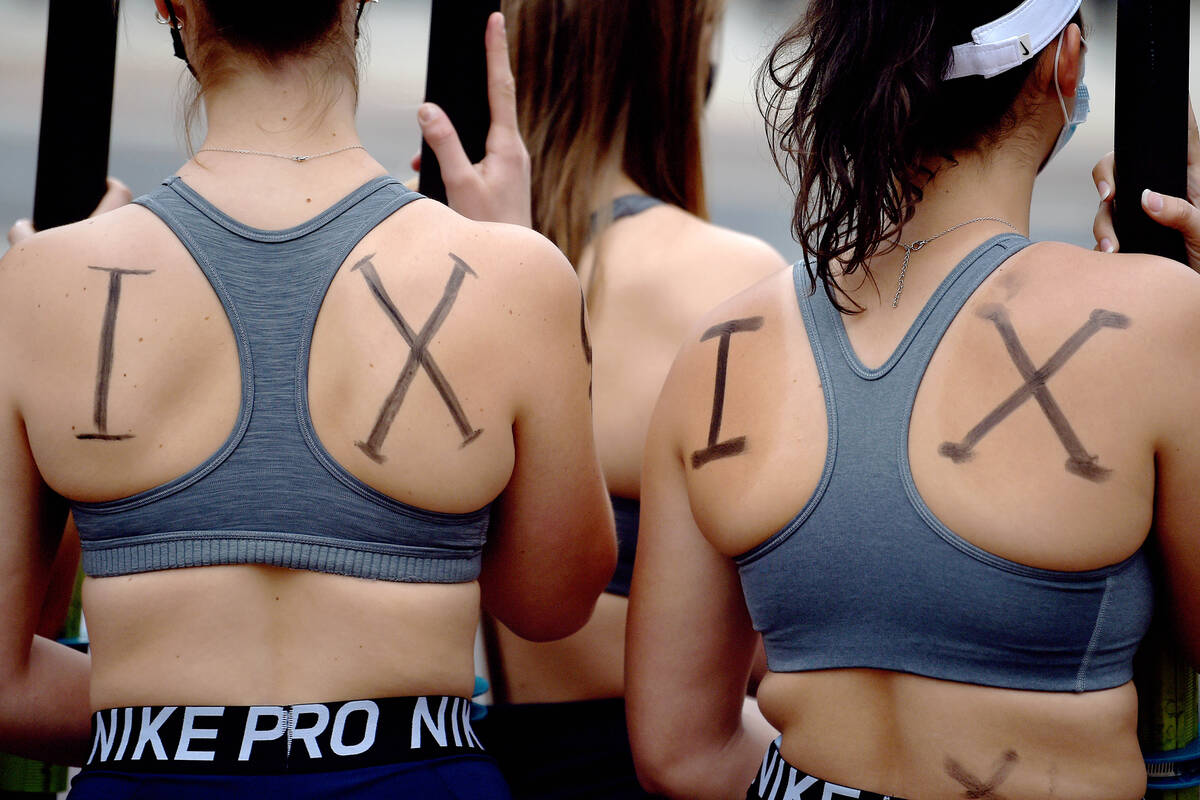Graney: Title IX connected all levels of sports for women
I have three older sisters. None played sports growing up. In some ways, it wasn’t even contemplated.
I have a daughter. She’s 20. She began playing sports at age 4. She had every opportunity.
And that’s a great thing.
Title IX turns 50 Thursday, the civil rights law that prohibits federally funded schools from discriminating on the basis of sex.
A central part of the law deals with participation between men and women in sports. Thirty-seven words changed the entire landscape of things.
Title IX, though, has no bearing on youth competition because such entities aren’t federally funded.
Although you might question that if you saw how some travel teams scour the country in search of the next showcase.
Connecting levels
But there is a pathway that connects youth to high school and high school to college and college to professional for women athletes. There is a relationship to all if it. One built by Title IX.
I coached my daughter in softball for years, first through the recreational stages and into club ball. And at no time could I have imagined she and teammates and opponents not having the chance to compete on an even playing level to those across the park on baseball diamonds.
It’s funny. You can directly trace Title IX to these outlets. A culture changed with passage of the law. And in doing so, youth sports saw a financial opportunity to be gained. And so it was. (You think college is expensive.)
In this way, the explosion of youth sports didn’t begin with boys. It did so with girls. Leagues were created everywhere in most every sport.
Sure, nothing like a federal law mandated young girls have the opportunity to play. But it was a residual effect — and thank goodness for it — from Title IX. A direct link. It became expected that girls would be on those fields and courts of play.
“To me, it’s not such about the opportunity but the acceptance that girls play sports,” said Mark Zeigler, a sports writer at the San Diego Union-Tribune whose daughter is a high-level prep water polo player in the ultracompetitive pools of Southern California. “Yes, it led to much opportunity, but it changed the perception in society about women and sports. Sure, we’ve won more Olympic medals now, but that’s not the most important thing about this.
“There was actually a time when it wasn’t considered proper for women to sweat or have physical contact. Now, we tell people our daughter plays water polo, and they come and watch and see girls kicking and pushing and elbowing each other, and it’s like, ‘OK, cool.’ That’s the biggest change from all this. The perception.”
It also changed how women are viewed physically, now as fit and strong and more than capable respected athletes. It changed the archaic perception of long ago regarding the dangers of sports for women.
One of our softball players tore her ACL competing in high school flag football. People weren’t upset that a girl was playing. They accepted it as part of the game. As part of playing sports.
It wasn’t always like that.
Some obvious flaws
Title IX has never proven to be the perfect law. Far from it. There are obvious flaws. Some universities still fail miserably at adhering to their obligations under the statute. Many decry the cutting of men’s sports to remain compliant with the percentage based scholarship dollars.
(See numbers, football.)
But as the father of a daughter and the brother of three sisters, I’ve seen the difference of their paths. Much opportunity over little. Acceptance over dissent. Cheered over ignored.
I’ll take the former every day of the week.
Ed Graney is a Sigma Delta Chi Award winner for sports column writing and can be reached at egraney@reviewjournal.com. He can be heard on “The Press Box,” ESPN Radio 100.9 FM and 1100 AM, from 7 a.m. to 10 a.m. Monday through Friday. Follow @edgraney on Twitter.























